The COVID-19 global pandemic has impacted everyones’ lives around the world in countless ways. COVID has entered our daily thoughts, social circles, and for millions worldwide it has physically entered our bodies.
Zack Wade, the Head Varsity Baseball Coach at International School Bangkok (ISB) and certified strength and conditioning trainer, contracted COVID a few months ago. He has since recovered and successfully returned to work and exercise as usual. But it wasn’t necessarily a quick comeback, and he learned a lot along the way.
Coming Back after COVID
“Personally, I had a mild case of COVID-19, which I was able to overcome with 16 days of isolation in self-quarantine, medication from a healthcare provider, and LOTS of rest. As soon as I was given permission to leave my room again, I planned for a challenging workout, as I was excited to use my body again!” said Zack.
Zack designed his first post-COVID workout to be at his usual medium-high intensity level to allow him to work just outside his comfort zone and thus improve his physical abilities. However, he quickly realized the effects of the virus were greater than he had anticipated. “About 15 minutes into the workout, I started experiencing shortness of breath, pain in my chest, and dizziness. In short, I knew something was wrong, and I stopped IMMEDIATELY. Thank goodness that I did because my lungs and chest continued to hurt for 24 hours, and I am certain that I could’ve caused myself some serious damage if I tried to ‘tough it out,’ so to speak,” said Zack.
He realized he still needed time to rest, recover, and apply an “ease back into it” approach to return to his old fitness routine. As a personal trainer with a successful online training business, fitness is an important aspect of Zack’s lifestyle. Having the correct program is essential for your level of fitness and ability. Carefully reviewing his symptoms, strengths, weaknesses, and the change in his fitness level as a direct result of the virus was crucial to safely returning to a healthy lifestyle.
Safely Returning to Fitness
“To be frank, this experience really freaked me out because I know how serious it could’ve been,” said Zack. Despite COVID-19 being a relatively new virus, we know that this viral infection can impact the brain, lungs, heart, and kidneys. Lingering symptoms of this viral infection are shortness of breath, muscle aches, loss of stamina, and exhaustion - also known as everything bad for athletic performance!
Moreover, moderate to severe cases of COVID can cause Myocarditis, or a systemic inflammatory response in the heart and blood vessels due to a viral infection, which can make rigorous activity extremely difficult and can be a significant risk factor for sudden cardiac death. While this is mostly in moderate to severe cases, it’s still essential to know that stressing the lungs with exercise while recovering can make it harder for the body to repair itself, which could lead to permanent tissue damage.
After experiencing the impacts of COVID-19 on his body firsthand, Zack wanted to share his experience and recommendations for returning to fitness after COVID with student-athletes, fitness coaches, fitness enthusiasts, and the general public. Here are some of his tips for safely and gradually returning to fitness activity after COVID:
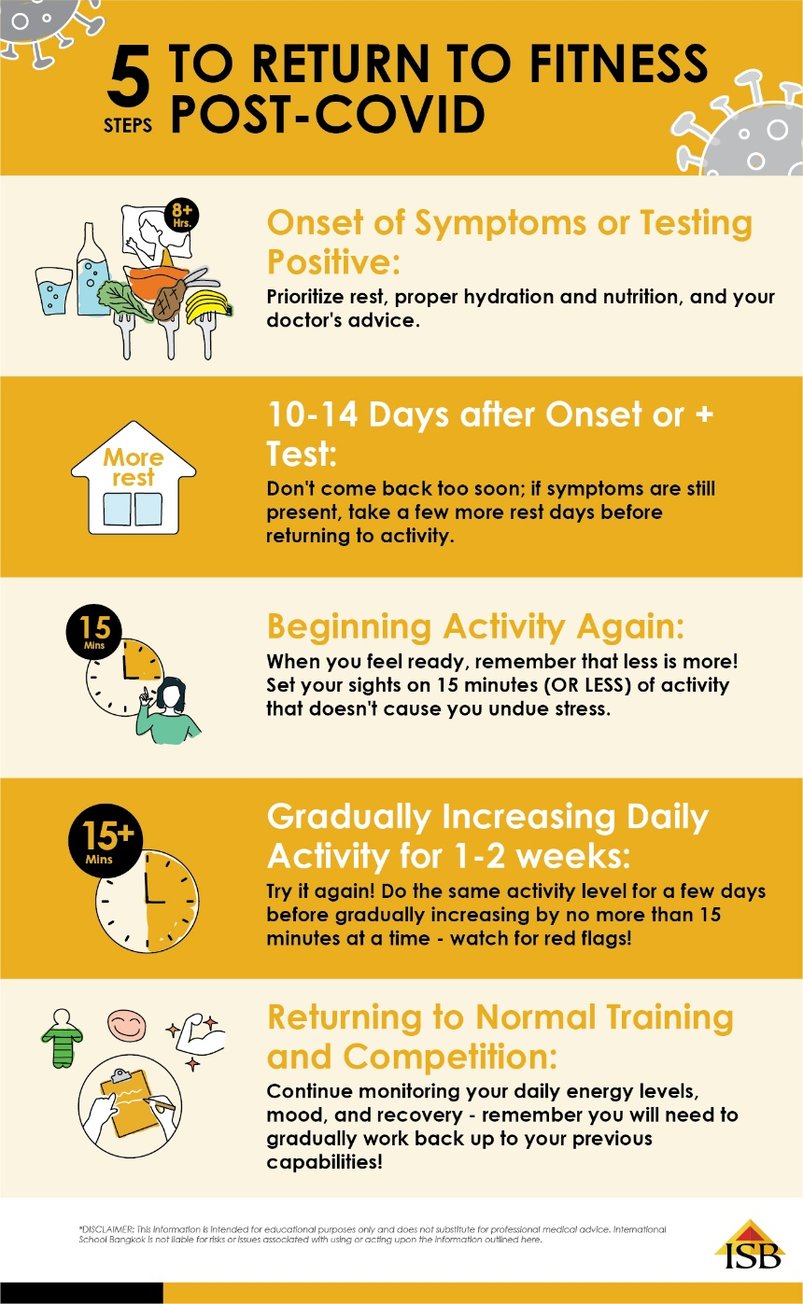
Be sure to watch for the following red flags as you follow the steps outlined above:

Key Takeaways
Dr. Dhave Setabutr, ISB’s School Health Coordinator, said, “Recovery from COVID-19 can vary from person to person, so it’s important to understand that your return to physical activity may be different from another person.
Prevention is key, and keeping a home kit of routine over-the-counter medications may be helpful if someone becomes ill. Self-isolation is important if someone tests positive, and many hospitals provide quality Home-Isolation programs assisting patients with care via telemedicine.”
We hope that Zack’s experience and Dr. Dhave’s advice have given you a better understanding of how COVID-19 impacts the body, especially with regard to physical activity after the infection has been overcome. While COVID-19 may not always be an indiscriminate and vicious killer, it certainly has an impact on your health. With all things health-related, advice is individualized, and it’s always better to know the accurate information to base your decisions moving forward.
Zack reminds us, “If you or your loved ones test positive, then please keep an eye out for each other and yourself. The overwhelming majority of infections are overcome with adequate rest and over-the-counter medication. However, not everyone is so lucky.”
Stay home, stay safe, and stay connected!
*DISCLAIMER: This information is intended for educational purposes only and does not substitute for professional medical advice. International School Bangkok is not liable for risks or issues associated with using or acting upon the information outlined here.
References:
- Aschwanden, C. (2021, February 2). Why Exercising Is So Tricky After Covid-19. Medium. Retrieved September 14, 2021, from https://elemental.medium.com/why-exercising-is-so-tricky-after-covid-19-4cf43ca82b13.
- The Children's Hospital of Philadelphia. (2020, October 28). Coronavirus - Guidance for Return to Sports, General Pediatricians - Clinical Pathway: Ambulatory and Emergency. Retrieved September 14, 2021, from https://www.chop.edu/clinical-pathway/coronavirus-guidance-return-sports-general-pediatricians.
- Cleveland Clinic. (2021, February 15). How To Exercise After Covid-19 Recovery. Cleveland Clinic. Retrieved September 14, 2021, from https://health.clevelandclinic.org/returning-to-sports-or-exercise-after-recovering-from-covid-19/.
- Dean, P. N., Jackson, L. B., & Paridon, S. M. (2020, July 14). Returning To Play After Coronavirus Infection: Pediatric Cardiologists' Perspective. American College of Cardiology. Retrieved September 14, 2021, from https://www.acc.org/latest-in-cardiology/articles/2020/07/13/13/37/returning-to-play-after-coronavirus-infection.
- Elliott, N., Martin, R., Heron, N., Elliott, J., Grimstead, D., & Biswas, A. (2020, October 1). Infographic. Graduated return to play guidance following COVID-19 infection. British Journal of Sports Medicine. Retrieved September 14, 2021, from https://bjsm.bmj.com/content/54/19/1174.

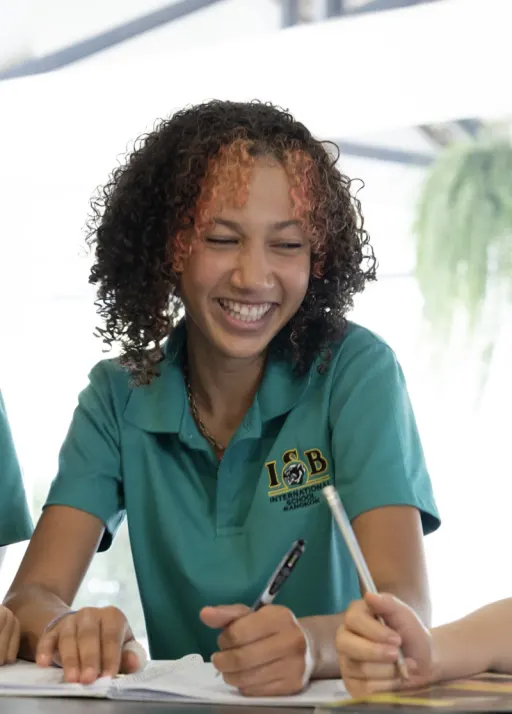

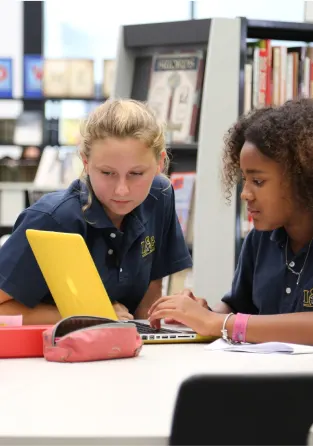
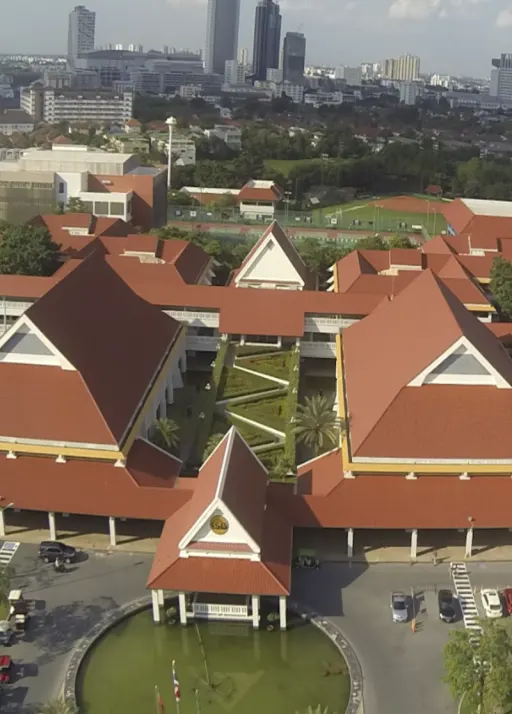


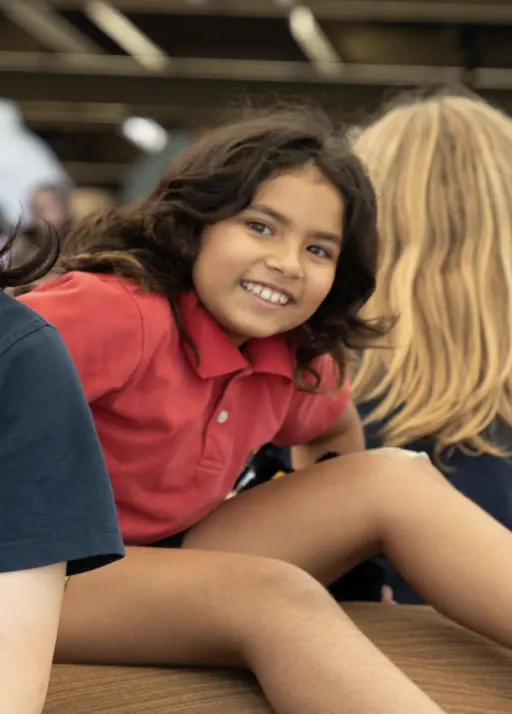


 日本語
日本語
 한국어
한국어
 中文 (简体)
中文 (简体)
 ภาษาไทย
ภาษาไทย